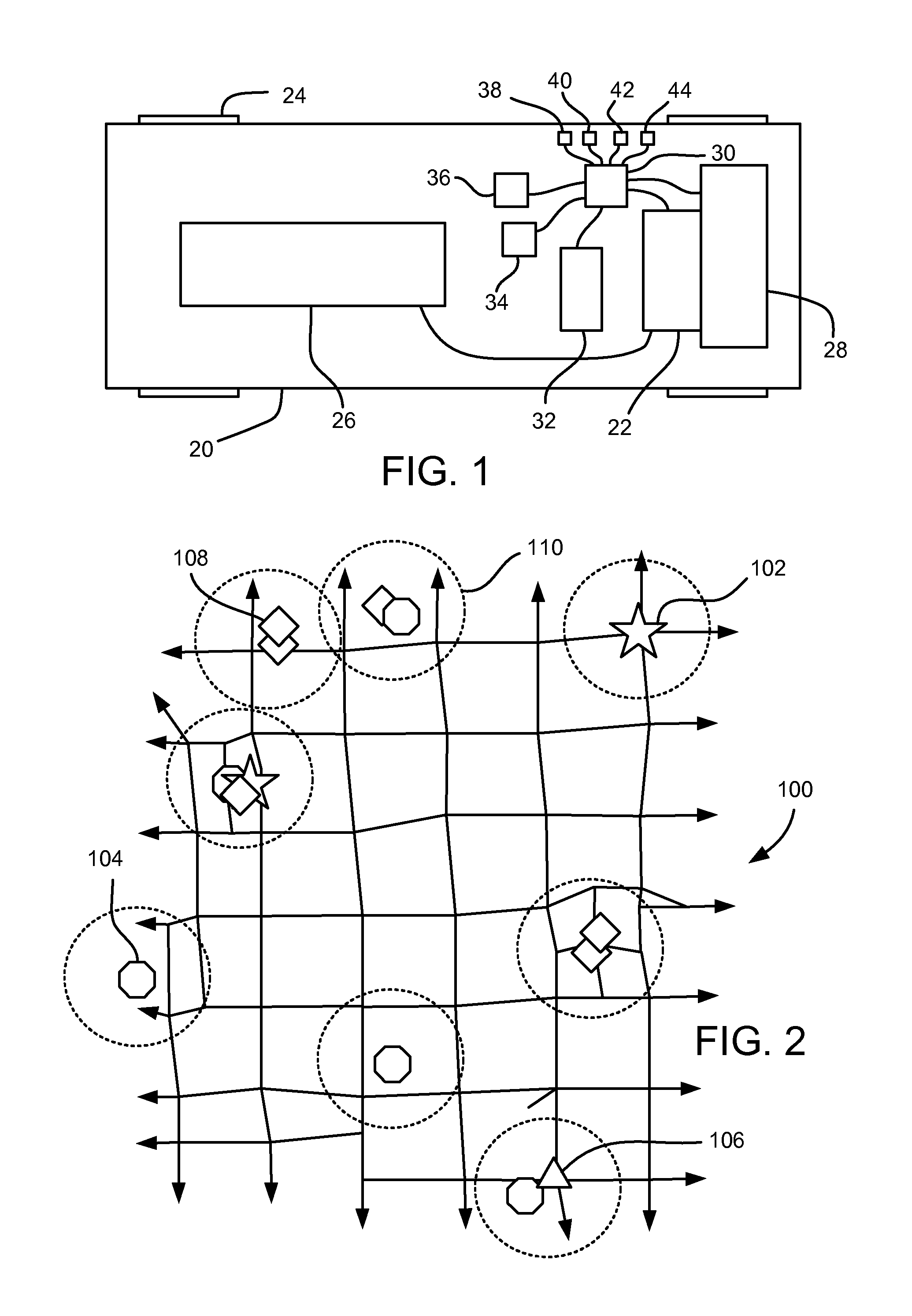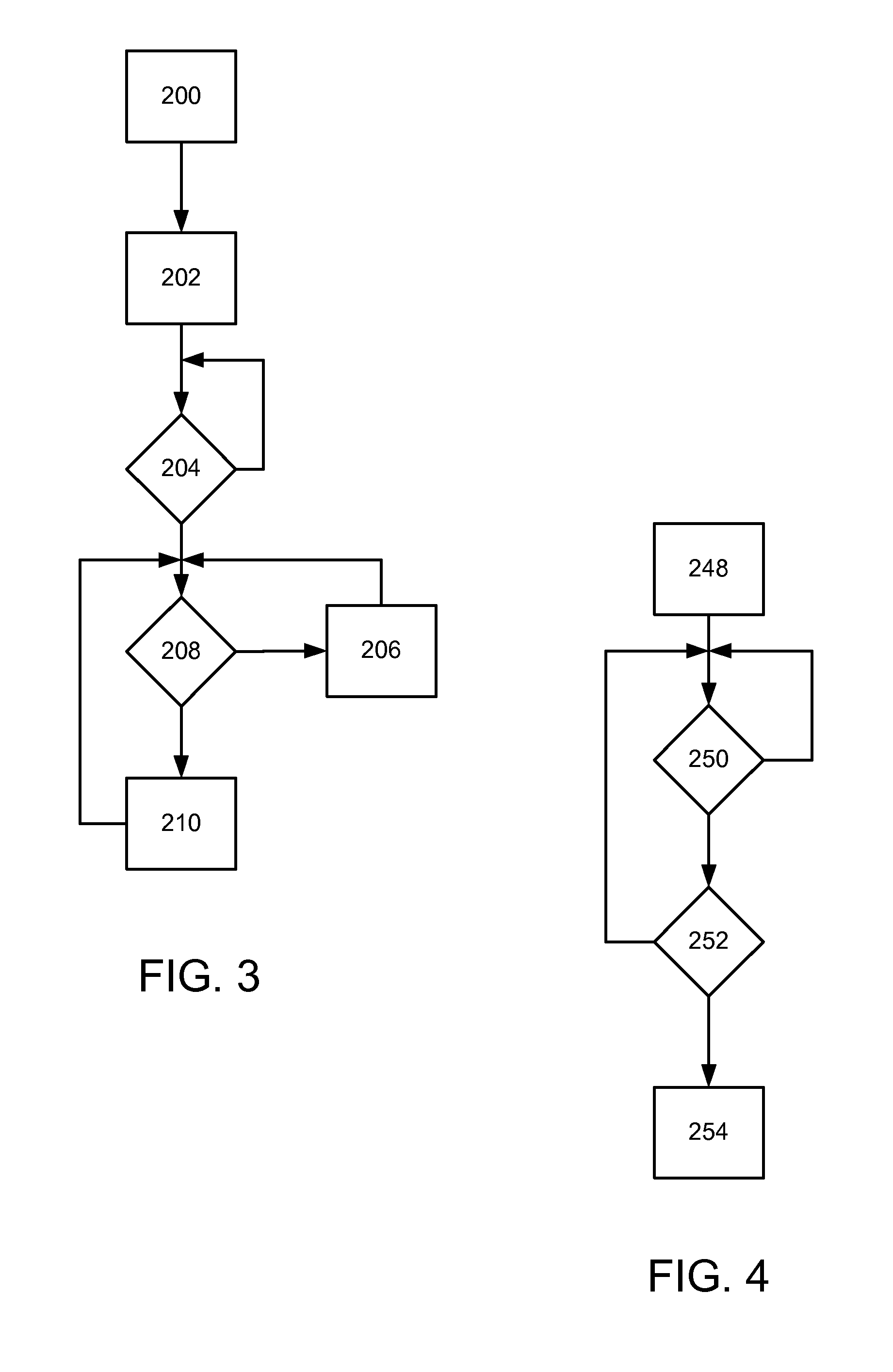Increasing Vehicle Range by Minimizing Trapped HVAC Energy
- Summary
- Abstract
- Description
- Claims
- Application Information
AI Technical Summary
Benefits of technology
Problems solved by technology
Method used
Image
Examples
Embodiment Construction
[0009]Referring to FIG. 1, a portion of a vehicle 20 is shown schematically. The vehicle 20 may include an electric motor 22 that may provide torque to vehicle wheels 24 and be powered by a battery 26. The vehicle may also include a power plant 28 that provides torque to the vehicle wheels or charges the battery 26 or both. The power plant 28 may be, for example, an internal combustion engine or a fuel cell. Alternatively, the vehicle 20 may not include a power plant 28, or may include a power plant such as an internal combustion engine without employing a motor to provide torque to the wheels 24.
[0010]One or more control module(s) 30 may be employed to communicate with and control the various vehicle systems. The control modules may be made up of various types of electronic hardware and software as is known to those skilled in the art. The control module 30 is in communication with a heating, ventilation and air conditioning (HVAC) system 32 and can control the operation of this sy...
PUM
 Login to View More
Login to View More Abstract
Description
Claims
Application Information
 Login to View More
Login to View More - R&D
- Intellectual Property
- Life Sciences
- Materials
- Tech Scout
- Unparalleled Data Quality
- Higher Quality Content
- 60% Fewer Hallucinations
Browse by: Latest US Patents, China's latest patents, Technical Efficacy Thesaurus, Application Domain, Technology Topic, Popular Technical Reports.
© 2025 PatSnap. All rights reserved.Legal|Privacy policy|Modern Slavery Act Transparency Statement|Sitemap|About US| Contact US: help@patsnap.com



